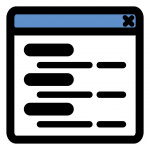How To Finally Stop Taking Useless Notes At Work
Whether you’re a student, you’re taking down notes during meetings, or you’re a regular at industry lectures and conferences, effective note taking is a skill you could probably benefit from.
Although we tend to take notes for years when we’re in school, most of us don’t ever learn how to take effective notes, and we’re wasting time on approaches that don’t work.
And unfortunately, the most common approaches to taking notes really don’t work well.
What Doesn’t Work
Do you ever highlight books or your own notes? Do you underline important points? Do you sometimes reread your notes to refresh your memory?
Here’s the bad news: Those techniques are all pretty much useless.
In fact, highlighting is such a bad study technique it may even harm your recall ability, since it highlights particular notes and takes them out of their original context, which makes it harder to form connections in your mind—and thus, harder to remember the material.
Studies have found the most effective note-taking techniques are active, whereas rereading, highlighting, and underlining are passive techniques. We need to interact heavily with our notes and the material we’re trying to learn if we’re to remember it.
So what active techniques can you use to make your note-taking efforts worthwhile?
Handwrite Your Notes
For starters, don’t use a laptop to take notes, no matter where you are. A series of studies pitted laptop note takers against students taking longhand notes and found the laptop approach fared worst in terms of information recall.
In the first study, students watched a video of a lecture or TED talk, then completed 30 minutes of hard cognitive tasks before taking a quiz on the material from the video.
Students who wrote longhand notes outperformed laptop note takers in recalling information to pass the quiz. And when the researchers examined the students’ notes, they found a clue as to why: The laptop notes tended to include a lot of verbatim transcription of the video, whereas handwritten notes couldn’t be written fast enough to do the same. If we can type fast enough to transcribe information verbatim, we can get away with writing notes without engaging our minds too much—we don’t have to think critically or even pay too much attention to simply write down exactly what someone’s saying.
So for the second study, the researchers specifically asked laptop note takers to not write notes verbatim.
In this experiment, not only did the longhand note takers still perform best on the quiz, the laptop note takers still wrote verbatim transcriptions of the videos. The explicit warning to not do so made no difference at all.
For a third study, the researchers gave the students a full week before the quiz, rather than 30 minutes, and gave some students 10 minutes to review their notes before taking the quiz. Once again, longhand note takers performed best, but those who took handwritten notes and reviewed them for 10 minutes before the quiz came out on top.
So while handwriting your notes is a better approach than using a computer, this approach works even better if paired with time to review your notes before testing yourself.
And if handwriting your notes seems too slow, you might look into learning shorthand to speed things up. While older shorthand techniques are based on hours upon hours of learning squiggles that correspond to various sounds and words, more recent shorthand approaches are more closely based on the existing English alphabet, but make it a lot faster to write down.
Use A Bullet Journal
To keep your handwritten notes organized, it helps to index them by page number and topic, as well as using a key of symbols to categorize ideas, notes, tasks, and other pieces of information quickly and clearly.
Luckily there’s no need to figure this out by yourself. The Bullet Journal system is designed to work with any notebook, and gives you a way to keep all your notes organized in one place.
Check out the Bullet Journal website for more details, but the basic organizational sections work like this:
- Set aside a few pages in the front of your notebook for your index and number every page after that (or buy a notebook with numbered pages).
- Turn to the next available page and put a heading to match what you’re writing. It could be a meeting name and date, the name of the person you’re meeting with, or the book you’re taking notes on.
- Go back to your index and mark down the heading and page number of your notes so you can find them again later.
The Bullet Journal system uses a set of symbols to mark notes, events, and tasks. You can also add your own to cover different categories if you need to. You might add an icon to denote an idea or something you need to follow up with a colleague, for instance.
The system also includes some simple setup to keep track of appointments or major events during the month and a daily to-do list. If you like keeping everything in one notebook, the Bullet Journal system and its handy indexing can help you keep track of your notes and find them easily later, even if they’re in-between tasks and agenda planning.
Video: Stop Worrying About Finishing Your To-Do List—You Should Write One Anyway
Draw Your Notes
Now this one might sound silly, but hear me out. Research shows if you draw something you’re more likely to remember it later.
A series of studies tested drawing against writing and other approaches for memorizing words, and found drawing came out on top.
In the first study, participants were given a series of words that were easy to draw (for example, “apple”) and were either asked to draw the word or write it down. To ensure participants spent the same amount of time either writing or drawing, they were given 40 seconds for each word and asked to fill the entire period. So they could write or draw the item over and over, or do it just once and spend the rest of the time adding flourishes and detail.
When participants were later tested on how many words they remembered, drawing helped them to remember twice as many as writing.
Follow-up studies compared drawing to other approaches such as writing down attributes of the object (e.g. its color, shape, size, varieties), focusing on a mental image of the object, and looking at a picture of it.
Drawing came out on top every time when participants’ memories were tested.
The researchers believe drawing works best because it combines various skills. When we draw an object we have to consider its physical properties, visualize it in our minds, and use our motor skills to render it on paper. Combining these skills, say the researchers, gives us a richer memory of each of the items we draw than if we simply copy down the word or look at a picture of the object.
Drawing your notes isn’t anything new. In fact, it has a name: sketchnotes. Designer Mike Rohde popularized “sketchnotes” with his books The Sketchnote Handbook and The Sketchnote Workbook. Rohde uses the term sketchnotes to describe the way he draws shapes and pictures among his notes to help him better take in the main ideas from conference talks, rather than trying to note down every little point.
Rohde advocates using signs and shapes such as boxes and arrows, different sized writing, and doodles to illustrate notes. You don’t need to be an amazing artist to use sketchnotes, he says. You only need to practice using simple shapes and images to illustrate your points.
While many of us are lucky to have left our lecture-listening days behind, opportunities for taking notes abound in almost any job. Whether it’s a quick note to remember something later or detailed notes on a book or research topic, there are plenty of opportunities for improving your note-taking approach.
And you can even combine these strategies. Graphic designer Serena uses a Bullet Journal to organize her handwritten notes and tasks, but also added drawings to her notebook:
. . . Flipping through my bullet journal, I noticed that the daily logs with no drawings did give me all the information about what I did, but those days with drawings were totally impressed in my mind. For this reason, last month I decided to combine my daily logs with real comic pages, in order to track what I do, what happens, and how I feel every day.
Whether you combine drawing and handwriting your notes with a Bullet Journal or similar symbol categorization system, or simply choose one technique to try today, remember one thing: Throw out your highlighters and stop wasting your time transcribing notes on your laptop.
This article originally appeared on RescueTime and is reprinted with permission.
Fast Company , Read Full Story
(84)














